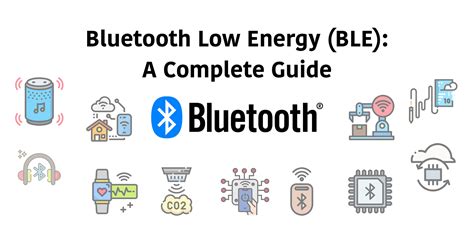Bluetooth Low Energy (BLE) technology has revolutionized the way devices communicate with each other, enabling a wide range of applications from smart home devices to wearable fitness trackers. One crucial aspect of BLE technology is power control, which plays a significant role in determining the overall performance, range, and battery life of BLE devices. In this article, we will delve into the basics of BLE power control, exploring the underlying principles, techniques, and best practices for optimizing power consumption in BLE devices.
Key Points
- BLE power control is critical for achieving optimal device performance, range, and battery life
- Transmit power, receive sensitivity, and data transfer rate are key factors influencing BLE power consumption
- Dynamic power control techniques, such as adaptive transmit power and receiver sensitivity, can significantly reduce power consumption
- Low-power modes, like sleep and deep sleep, can help minimize power consumption during periods of inactivity
- Hardware and software optimization, including antenna design and firmware configuration, are essential for achieving optimal BLE power control
BLE Power Control Fundamentals

BLE devices operate on a frequency of 2.4 GHz, using a technique called frequency hopping spread spectrum to minimize interference. The power consumption of BLE devices is directly related to the transmit power, receive sensitivity, and data transfer rate. The transmit power, typically measured in decibels (dBm), determines the range and reliability of the communication link, while the receive sensitivity, measured in dBm, affects the device’s ability to detect incoming signals. The data transfer rate, measured in bits per second (bps), impacts the amount of power required to transmit and receive data.
Transmit Power Control
Transmit power control is a critical aspect of BLE power control, as it directly affects the range and reliability of the communication link. BLE devices typically have a maximum transmit power of around 10 dBm (10 milliwatts), although some devices may have higher or lower transmit powers depending on their specific application. To minimize power consumption, BLE devices often employ dynamic power control techniques, such as adaptive transmit power, which adjusts the transmit power based on the distance between devices and the quality of the communication link.
| Transmit Power Level | Typical Range |
|---|---|
| Low | Up to 10 meters (33 feet) |
| Medium | Up to 20 meters (66 feet) |
| High | Up to 50 meters (164 feet) |

Receive Sensitivity and Data Transfer Rate
Receive sensitivity and data transfer rate are also crucial factors in BLE power control. A higher receive sensitivity allows devices to detect weaker incoming signals, reducing the need for retransmissions and minimizing power consumption. The data transfer rate, on the other hand, impacts the amount of power required to transmit and receive data. BLE devices typically operate at data transfer rates between 2 and 100 kbps, although some devices may support higher or lower data rates depending on their specific application.
Low-Power Modes and Power Saving Techniques

BLE devices often employ low-power modes and power saving techniques to minimize power consumption during periods of inactivity. These modes include sleep, deep sleep, and hibernate, each with varying levels of power consumption. Sleep mode, for example, allows devices to quickly wake up and resume operation, while deep sleep mode provides a more significant reduction in power consumption at the cost of longer wake-up times.
Hardware and Software Optimization
Hardware and software optimization are also essential for achieving optimal BLE power control. Device manufacturers can optimize antenna design, reduce component power consumption, and implement efficient firmware algorithms to minimize power consumption. Additionally, software techniques, such as data compression and encryption, can help reduce the amount of data transmitted and received, further minimizing power consumption.
What is the typical power consumption of a BLE device?
+The typical power consumption of a BLE device varies depending on the specific application and use case. However, a typical BLE device can consume between 1-100 milliamperes (mA) of current, with an average power consumption of around 10-20 mA.
How can I optimize BLE power control in my device?
+To optimize BLE power control, you can consider techniques such as adaptive transmit power, receiver sensitivity adjustment, and data transfer rate optimization. Additionally, implementing low-power modes, such as sleep and deep sleep, can help minimize power consumption during periods of inactivity.
What is the impact of antenna design on BLE power control?
+Antenna design can significantly impact BLE power control, as it affects the device's ability to transmit and receive signals. A well-designed antenna can help minimize power consumption by reducing the need for retransmissions and improving the overall communication link quality.
In conclusion, BLE power control is a critical aspect of BLE technology, requiring careful consideration of transmit power, receive sensitivity, and data transfer rate. By employing dynamic power control techniques, low-power modes, and hardware and software optimization, device manufacturers can achieve optimal BLE power control, minimizing power consumption while maintaining reliable and efficient communication. As the demand for BLE devices continues to grow, understanding the basics of BLE power control will become increasingly important for device manufacturers, enabling them to create innovative, power-efficient, and reliable products that meet the evolving needs of consumers.



